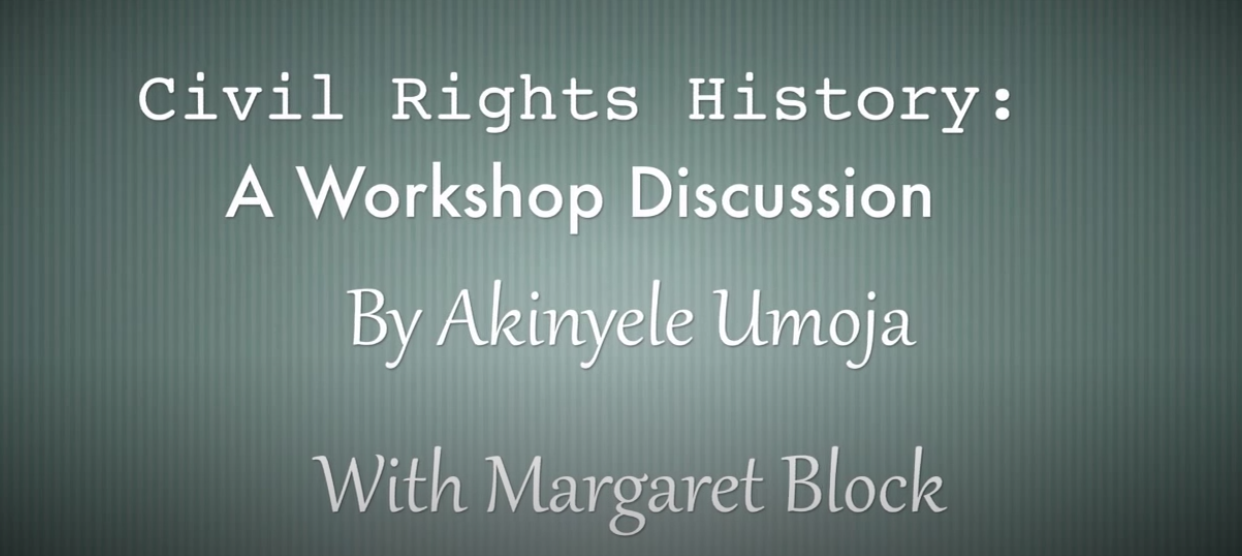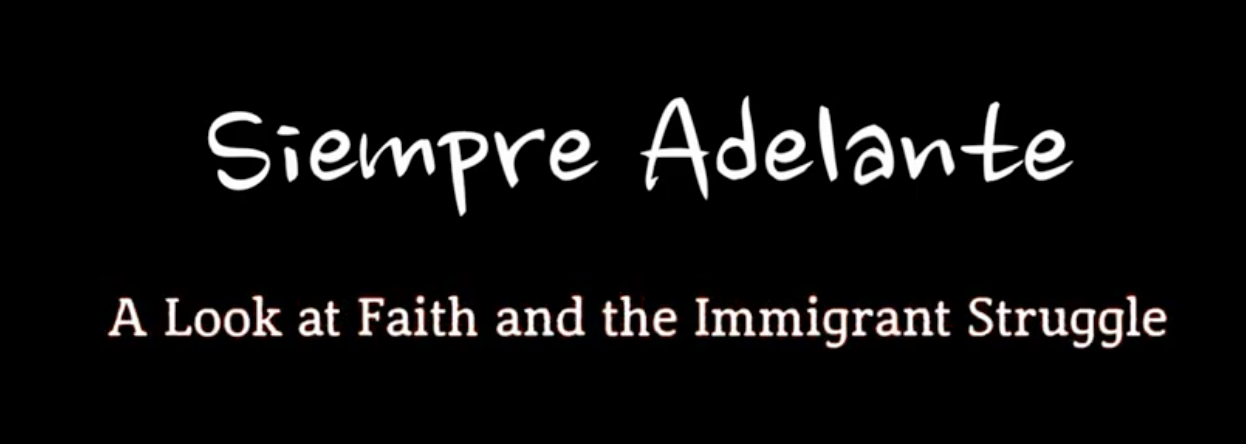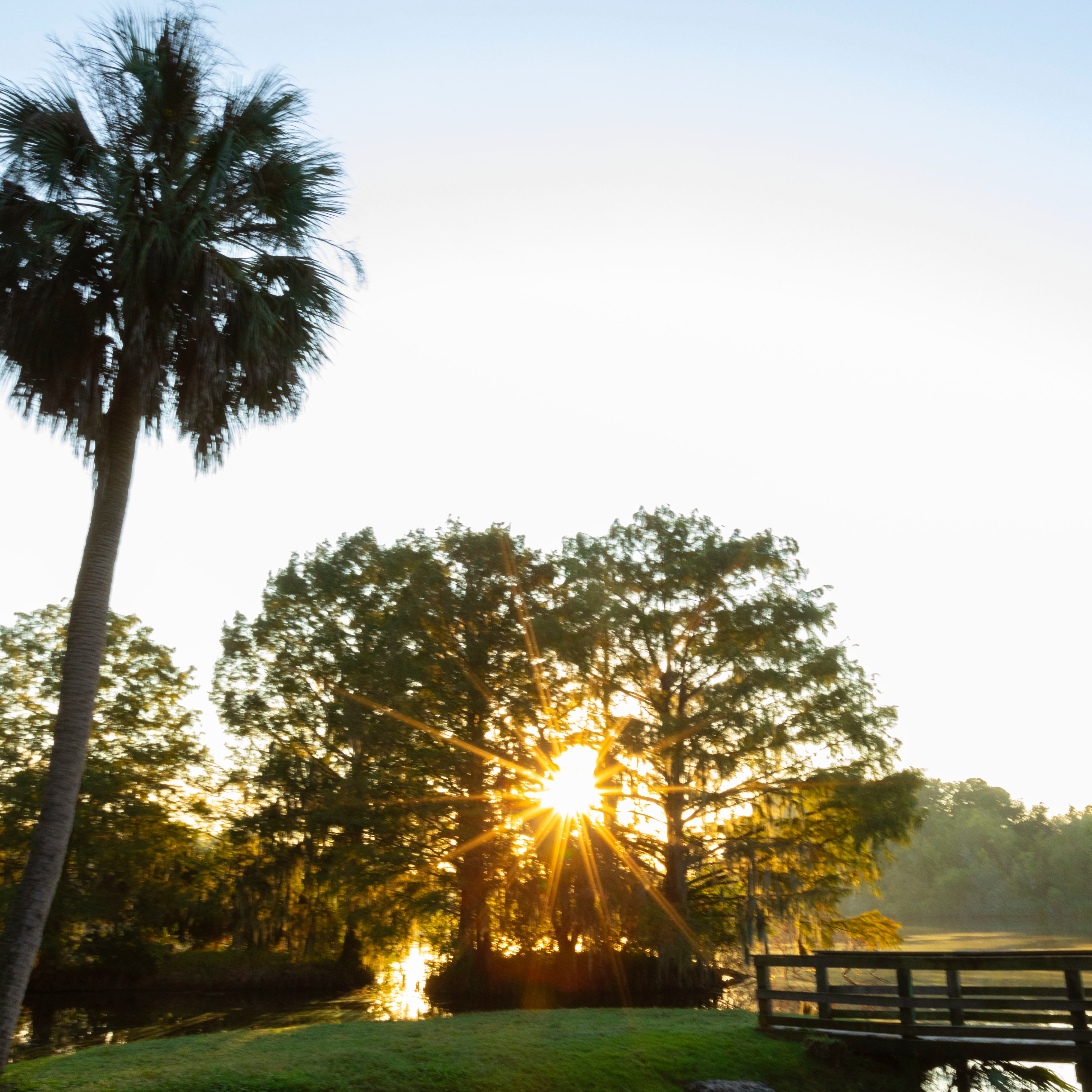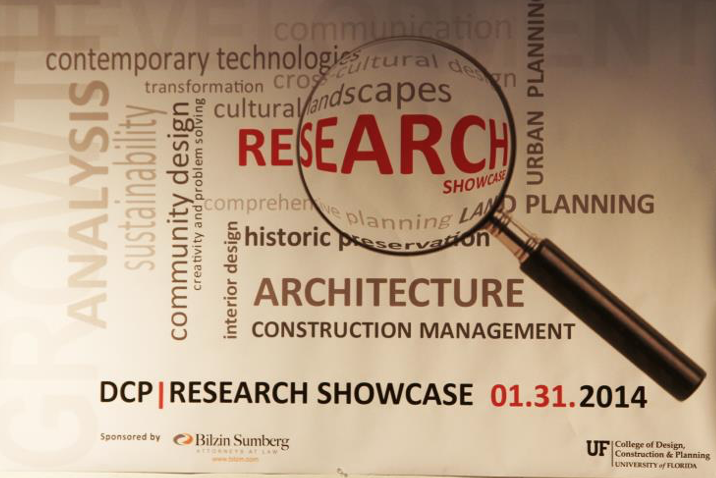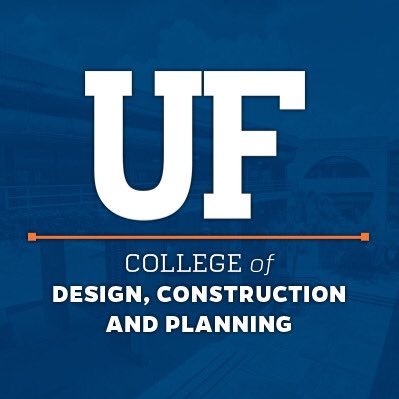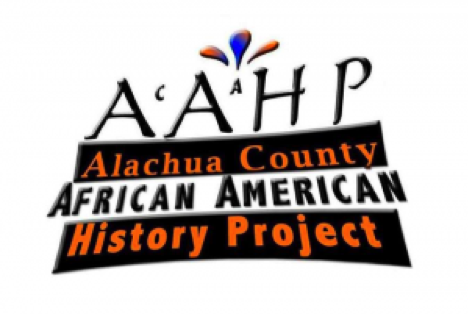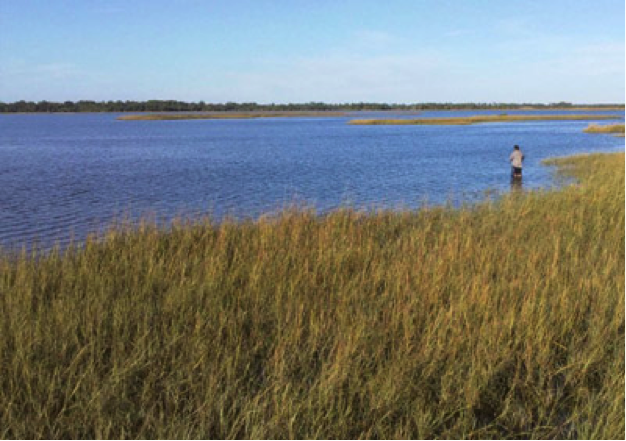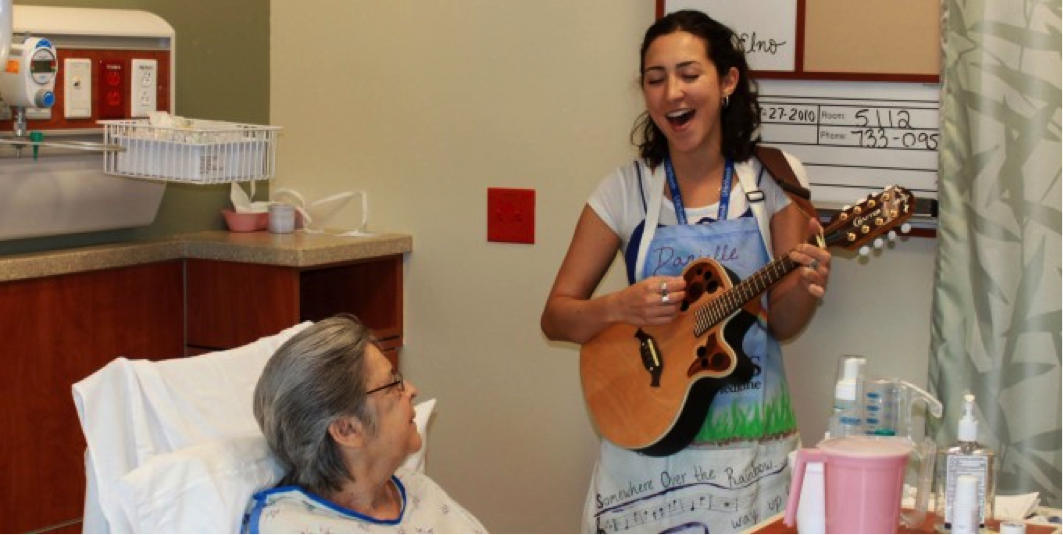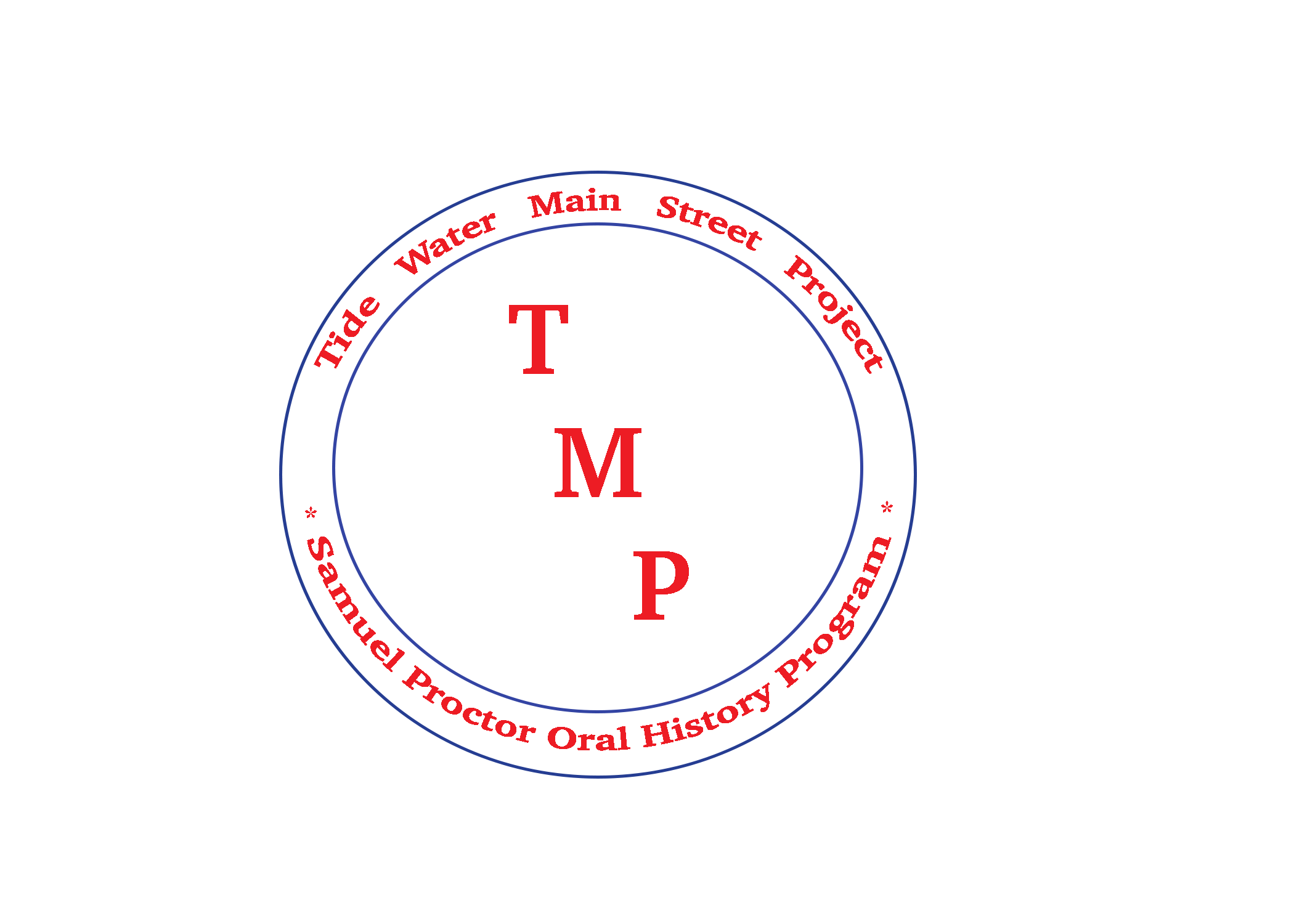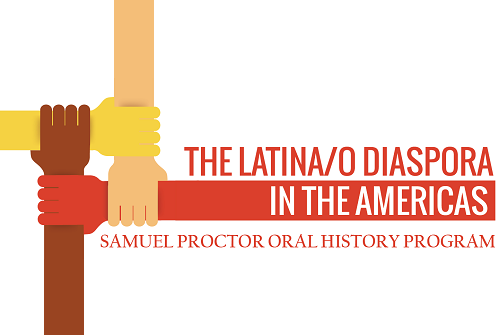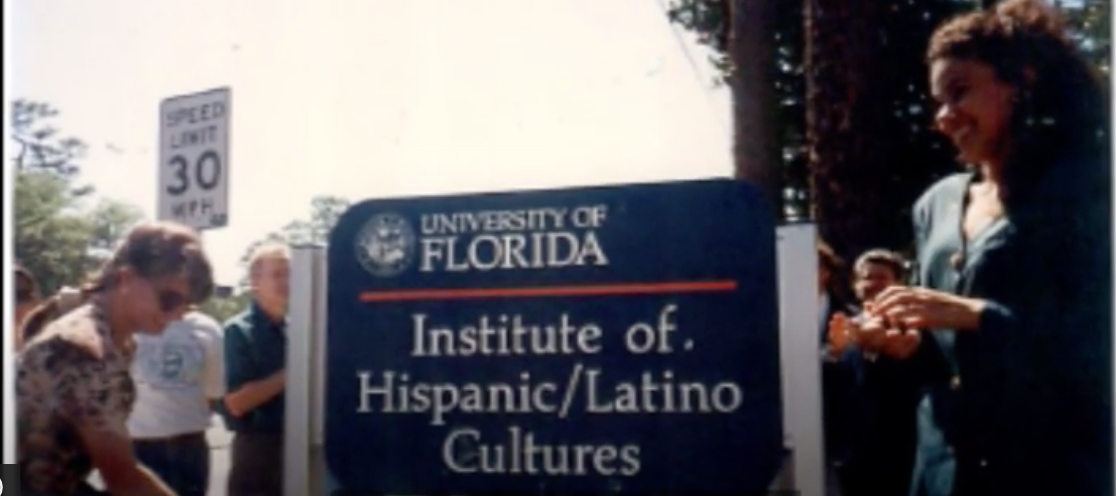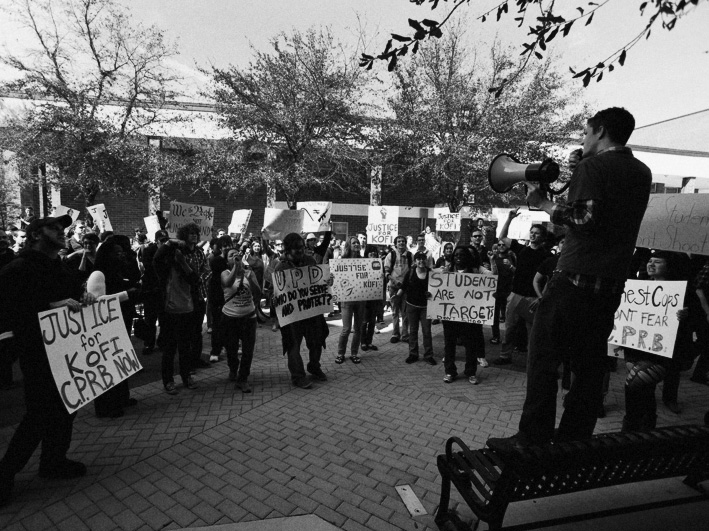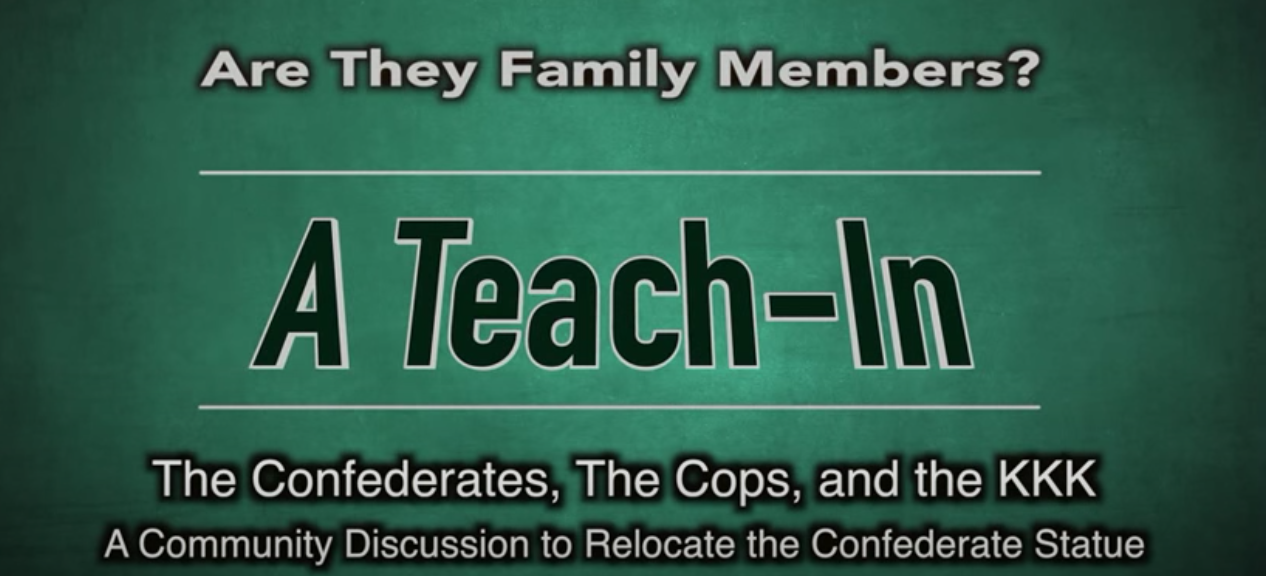2013
Students from the Samuel Proctor Oral History Program are participants in a discussion of Civil Rights history by professor Akinyele Umoja and veteran civil rights activist, Margaret Block. The workshop was given in Cleveland, Mississippi on September 20, 2013. Students engage in an annual research trip under the guidance of the Samuel Proctor Oral History Program at the University of Florida for the purpose of collecting oral histories from key figures in the Civil Rights Movement.
2013
Students from the Samuel Proctor Oral History Program are participants in a discussion of Civil Rights history by professor Akinyele Umoja and veteran civil rights activist, Margaret Block. The workshop was given in Cleveland, Mississippi on September 20, 2013. Students engage in an annual research trip under the guidance of the Samuel Proctor Oral History Program at the University of Florida for the purpose of collecting oral histories from key figures in the Civil Rights Movement.
2013
Siempre Adelante features the life narratives of four immigrants from three different countries (Mexico, El Salvador, and Guatemala) who share the struggle of always moving forward. This film offers a minuscule sample of the large immigrant population of Alachua county and north central Florida. These brave individuals allow us to take a peek into their personal struggles with domestic violence, exploitation, family dynamics, and their journey to a foreign land in hopes of providing a better quality of life for themselves and their loved ones. The goal of this film is to impart how religion and the church has been a source of support and motivation for them in the face of fear and discrimination in an unwelcoming land. Siempre Adelante hopes to motivate fellow believers to become part of the immigrant rights movement, and to realize that these stories are a reflection of the lives of their sisters and brothers.
Concept by Jaime Zelaya and the Samuel Proctor Oral History Program.
2013
Siempre Adelante features the life narratives of four immigrants from three different countries (Mexico, El Salvador, and Guatemala) who share the struggle of always moving forward. This film offers a minuscule sample of the large immigrant population of Alachua county and north central Florida. These brave individuals allow us to take a peek into their personal struggles with domestic violence, exploitation, family dynamics, and their journey to a foreign land in hopes of providing a better quality of life for themselves and their loved ones. The goal of this film is to impart how religion and the church has been a source of support and motivation for them in the face of fear and discrimination in an unwelcoming land. Siempre Adelante hopes to motivate fellow believers to become part of the immigrant rights movement, and to realize that these stories are a reflection of the lives of their sisters and brothers.
Concept by Jaime Zelaya and the Samuel Proctor Oral History Program.
2013
In 2013, the UF Center for the Humanities and the Public Sphere (CHPS) launched its grants for Programs in the Public Humanities. The Public Humanities grant opportunity, supported by the CHPS Rothman Endowment, encourages and enhances collaboration between the University of Florida and individuals, groups, and organizations in the community by offering grants up to $3,000 to support public programs rooted in one or more of the humanities disciplines. By drawing on expertise from UF and community partners as co-applicants, these public humanities projects create new and exciting opportunities for collaboration between the university and multiple community organizations. Furthermore, these projects encourage community building, cultural understanding, and personal reflection on the values and experiences that connect us together as neighbors, colleagues, and community members to create a civil and morally responsible society. Through projects like these, the Center for Humanities and the Public Sphere seeks to promote broad civic engagement with the communities in which we live and teach.
2013
In 2013, the UF Center for the Humanities and the Public Sphere (CHPS) launched its grants for Programs in the Public Humanities. The Public Humanities grant opportunity, supported by the CHPS Rothman Endowment, encourages and enhances collaboration between the University of Florida and individuals, groups, and organizations in the community by offering grants up to $3,000 to support public programs rooted in one or more of the humanities disciplines. By drawing on expertise from UF and community partners as co-applicants, these public humanities projects create new and exciting opportunities for collaboration between the university and multiple community organizations. Furthermore, these projects encourage community building, cultural understanding, and personal reflection on the values and experiences that connect us together as neighbors, colleagues, and community members to create a civil and morally responsible society. Through projects like these, the Center for Humanities and the Public Sphere seeks to promote broad civic engagement with the communities in which we live and teach.
2013
N. O. Nawari, architecture associate professor, working in collaboration with Frank Bosworth, director of CityLab-Orlando, and Michael Kuenstle, architecture associate professor, extended the architectural structures curriculum into the built environment using Dr. Phillips Center for the Performing Arts in Orlando.
The knowledge of building structures in the architectural curriculum is based on part theory and part applications. Teaching graduate students the principles of structural, design of steel, concrete and wood using physics, numerical equations and advanced computer modeling can be a difficult task and with the School of Architecture CityLab situated in Orlando, we are fortunate to have a steady stream of building projects constructed in Orlando during the past few years to use as teaching laboratories. Often it is when students are given the opportunity to make on-site observations of the creative applications of this complex science that the course starts to come together as a critical knowledge base for students.
This term, the professors used the 330,000-square-foot statement in the heart of downtown Orlando, designed to capture the heartbeat of the people who live here as a case study project to focus student research on structural steel and concrete framing and system details. The building is designed by Barton Myers Associates, working with local architects HKS Inc. and Baker Barrios Architect. Special thanks and gratitude are due to architect Jacki Hale and structural engineer Laura Lewis for facilitating the site tour and presentation.
2013
N. O. Nawari, architecture associate professor, working in collaboration with Frank Bosworth, director of CityLab-Orlando, and Michael Kuenstle, architecture associate professor, extended the architectural structures curriculum into the built environment using Dr. Phillips Center for the Performing Arts in Orlando.
The knowledge of building structures in the architectural curriculum is based on part theory and part applications. Teaching graduate students the principles of structural, design of steel, concrete and wood using physics, numerical equations and advanced computer modeling can be a difficult task and with the School of Architecture CityLab situated in Orlando, we are fortunate to have a steady stream of building projects constructed in Orlando during the past few years to use as teaching laboratories. Often it is when students are given the opportunity to make on-site observations of the creative applications of this complex science that the course starts to come together as a critical knowledge base for students.
This term, the professors used the 330,000-square-foot statement in the heart of downtown Orlando, designed to capture the heartbeat of the people who live here as a case study project to focus student research on structural steel and concrete framing and system details. The building is designed by Barton Myers Associates, working with local architects HKS Inc. and Baker Barrios Architect. Special thanks and gratitude are due to architect Jacki Hale and structural engineer Laura Lewis for facilitating the site tour and presentation.
2014
At this year’s Seventh Annual DCP Research Showcase, faculty, students and industry professionals presented and discussed research on this year’s theme, “Collaborative Community Initiatives.”
In the afternoon, industry professionals participated in the “Collaboration in the Community” panel discussion and UF faculty from other colleges participated in the “Collaboration in the University Community” panel discussion.
The Research Showcase concluded with the keynote address from Dr. David Norton, UF Vice President for Research. Norton presented on the topic, “Collaborative and Interdisciplinary Research: Creating New Knowledge at the Interface.”
2014
At this year’s Seventh Annual DCP Research Showcase, faculty, students and industry professionals presented and discussed research on this year’s theme, “Collaborative Community Initiatives.”
In the afternoon, industry professionals participated in the “Collaboration in the Community” panel discussion and UF faculty from other colleges participated in the “Collaboration in the University Community” panel discussion.
The Research Showcase concluded with the keynote address from Dr. David Norton, UF Vice President for Research. Norton presented on the topic, “Collaborative and Interdisciplinary Research: Creating New Knowledge at the Interface.”
2014
Throughout the Spring semester, the studio’s 12 students met with the community and local group Brothers United to discuss the design of the pavilion, which will host musical performances, pageants, outdoor classes and other events. Each year, it will also serve as the centerpiece for the town’s annual Emancipation Day celebration that draws thousands of participants.
The pavilion is adjacent to the now closed Carver School, which is a significant historic site for the African American community. To honor the school’s faculty, the students designed a memorial with teachers’ names placed within the pavilion’s wall that faces the Carver School site.
Breaking ground the week before Spring Break, the students continued to build the project during the rest of the semester. Architecture PhD student Carla Brisotto assisted with studio teaching during the semester. On Wednesday April 29, the community held a ribbon-cutting ceremony for the pavilion.
2014
Throughout the Spring semester, the studio’s 12 students met with the community and local group Brothers United to discuss the design of the pavilion, which will host musical performances, pageants, outdoor classes and other events. Each year, it will also serve as the centerpiece for the town’s annual Emancipation Day celebration that draws thousands of participants.
The pavilion is adjacent to the now closed Carver School, which is a significant historic site for the African American community. To honor the school’s faculty, the students designed a memorial with teachers’ names placed within the pavilion’s wall that faces the Carver School site.
Breaking ground the week before Spring Break, the students continued to build the project during the rest of the semester. Architecture PhD student Carla Brisotto assisted with studio teaching during the semester. On Wednesday April 29, the community held a ribbon-cutting ceremony for the pavilion.
2014
Four interdisciplinary teams competed March 21-23 for the 2014 Witters Competition. The 48-hour design charrette was led by Tom Smith, SoA senior lecturer, and Ravi Srinivasan, BCN assistant professor.
The project challenge was to develop a proposal for a mixed use, housing project in the downtown area of Gainesville. The proposal would provide a viable alternative development project in comparison to the single-family housing or apartment living buildings that currently make up the area. The challenge also tasked the teams to develop structures that met the Living Building Guidelines (LBC) which includes site, water, energy, health, materials, equity and beauty.
This year’s winning team was Lawrence Zeng, LAE, Alexandra Fasshauer, ARCH, Julie Emminger, IND, and Bethany Mayhew, ARCH. This team was the smallest of the four teams that competed which worked to their advantage.
Of the four students, one had competed in the Witters Competition before. “This experience has been extremely positive for me,” says Emminger. “Working in small interdisciplinary teams brings out the creativity in all of us. This is true collaboration and allows us to build holistically, as everyone gets to contribute.”
When asked what advice to give to future Witters Competition team members, Fasshauer says to definitely get involved with the competition and take advantage of working with students from other disciplines. “Seeing what we could produce in a short amount of time made us realize what we are capable of when working in an interdisciplinary team,” states Fasshauer. “We continued to stay open-minded throughout the process and allowed everyone to contribute ideas and thoughts.”
Established in 1993, the Witters Competition is endowed by Arthur G. and Beverley A. Witters for a college-wide interdisciplinary academic competition to foster better understanding among design, construction and planning students.
2014
Four interdisciplinary teams competed March 21-23 for the 2014 Witters Competition. The 48-hour design charrette was led by Tom Smith, SoA senior lecturer, and Ravi Srinivasan, BCN assistant professor.
The project challenge was to develop a proposal for a mixed use, housing project in the downtown area of Gainesville. The proposal would provide a viable alternative development project in comparison to the single-family housing or apartment living buildings that currently make up the area. The challenge also tasked the teams to develop structures that met the Living Building Guidelines (LBC) which includes site, water, energy, health, materials, equity and beauty.
This year’s winning team was Lawrence Zeng, LAE, Alexandra Fasshauer, ARCH, Julie Emminger, IND, and Bethany Mayhew, ARCH. This team was the smallest of the four teams that competed which worked to their advantage.
Of the four students, one had competed in the Witters Competition before. “This experience has been extremely positive for me,” says Emminger. “Working in small interdisciplinary teams brings out the creativity in all of us. This is true collaboration and allows us to build holistically, as everyone gets to contribute.”
When asked what advice to give to future Witters Competition team members, Fasshauer says to definitely get involved with the competition and take advantage of working with students from other disciplines. “Seeing what we could produce in a short amount of time made us realize what we are capable of when working in an interdisciplinary team,” states Fasshauer. “We continued to stay open-minded throughout the process and allowed everyone to contribute ideas and thoughts.”
Established in 1993, the Witters Competition is endowed by Arthur G. and Beverley A. Witters for a college-wide interdisciplinary academic competition to foster better understanding among design, construction and planning students.
2014
Thanks to musician and music educator, David Ford of Tonewood Family Music, Inc., patients of all ages and their families are invited to sing, dance, and play a variety of instruments to express that we all have “Music in Me!”
“Music in Me” is associated with the UF Health Shands Children’s Hospital Child Life Program in partnership with Shands Arts in Medicine, and is made possible through the generous support of the Avnee Rawal Fund for Pediatric Health and Community Wellness.
2014
Thanks to musician and music educator, David Ford of Tonewood Family Music, Inc., patients of all ages and their families are invited to sing, dance, and play a variety of instruments to express that we all have “Music in Me!”
“Music in Me” is associated with the UF Health Shands Children’s Hospital Child Life Program in partnership with Shands Arts in Medicine, and is made possible through the generous support of the Avnee Rawal Fund for Pediatric Health and Community Wellness.
2014
The Alachua County African American History Project enables the Samuel Proctor Oral History Program to conduct and transcribe oral histories with African Americans in Alachua County, University of Florida, and surrounding areas who came of age during the final decades of legal segregation. AAHP involves students who conduct oral histories as part of research seminars and community-based internships. These histories are used to establish an archive of black historical narratives on segregation and the civil rights movement. Researchers will explore themes such as landownership, labor, entrepreneurship, civil rights, education, and histories of institutions such as schools, churches and civic organizations.
2014
The Alachua County African American History Project enables the Samuel Proctor Oral History Program to conduct and transcribe oral histories with African Americans in Alachua County, University of Florida, and surrounding areas who came of age during the final decades of legal segregation. AAHP involves students who conduct oral histories as part of research seminars and community-based internships. These histories are used to establish an archive of black historical narratives on segregation and the civil rights movement. Researchers will explore themes such as landownership, labor, entrepreneurship, civil rights, education, and histories of institutions such as schools, churches and civic organizations.
2014
“Sarasota offers unique opportunities for UF students to study architecture and urbanism in a culturally and environmentally rich community that also faces great ecological and infrastructural challenges as it continues to grow,” said Martin Gold, Director of the UF School of Architecture.
The program will focus on issues of emerging technology, culture, and climate responsive architecture drawn from the movement known as the Sarasota School of Architecture, also known as “Sarasota Modern.” This regional style brought the area international recognition from the 1940s through the 1960s for adapting the International Style to the tropical climate.
CityLab-Sarasota was developed through collaboration among the UF School of Architecture, Sarasota County and the newly formed Center for Architecture (CFA).
The CFA, a local nonprofit organization whose leadership is drawn from local citizens, design professionals, stakeholders and community advocates, will curate permanent and visiting exhibits, organize community lectures, seminars and workshops and will liaise with CityLab-Sarasota on projects related to community design.
2014
“Sarasota offers unique opportunities for UF students to study architecture and urbanism in a culturally and environmentally rich community that also faces great ecological and infrastructural challenges as it continues to grow,” said Martin Gold, Director of the UF School of Architecture.
The program will focus on issues of emerging technology, culture, and climate responsive architecture drawn from the movement known as the Sarasota School of Architecture, also known as “Sarasota Modern.” This regional style brought the area international recognition from the 1940s through the 1960s for adapting the International Style to the tropical climate.
CityLab-Sarasota was developed through collaboration among the UF School of Architecture, Sarasota County and the newly formed Center for Architecture (CFA).
The CFA, a local nonprofit organization whose leadership is drawn from local citizens, design professionals, stakeholders and community advocates, will curate permanent and visiting exhibits, organize community lectures, seminars and workshops and will liaise with CityLab-Sarasota on projects related to community design.
2014
The College of Design, Construction and Planning is rapidly becoming a leader in the area of sea level rise and climate change adaptation planning.
Building on existing and previous UF research, three sea level rise adaptation planning projects led by DCP faculty recently received funding from the National Oceanic and Atmospheric Administration (NOAA) through the Florida and Mississippi-Alabama Sea Grant programs.
Research on global systems suggests that coastal communities and regions are becoming increasingly vulnerable to sea level rise and climate change. As a result, researchers and practitioners are developing processes, tools and strategies for adapting to future impacts.
Zhong-Ren Peng, professor of urban and regional planning is directing the first project, titled “Development of Sea Level Rise Adaptation Planning Procedures and Tools Using NOAA Sea Level Rise Impacts Viewer.” The project will improve the “Viewer” by incorporating more data and functions as a decision support tool to help local planners better understand regional vulnerability and prioritize adaptation options. The project team will partner with the Tampa Bay Regional Planning Council in Florida.
2014
The College of Design, Construction and Planning is rapidly becoming a leader in the area of sea level rise and climate change adaptation planning.
Building on existing and previous UF research, three sea level rise adaptation planning projects led by DCP faculty recently received funding from the National Oceanic and Atmospheric Administration (NOAA) through the Florida and Mississippi-Alabama Sea Grant programs.
Research on global systems suggests that coastal communities and regions are becoming increasingly vulnerable to sea level rise and climate change. As a result, researchers and practitioners are developing processes, tools and strategies for adapting to future impacts.
Zhong-Ren Peng, professor of urban and regional planning is directing the first project, titled “Development of Sea Level Rise Adaptation Planning Procedures and Tools Using NOAA Sea Level Rise Impacts Viewer.” The project will improve the “Viewer” by incorporating more data and functions as a decision support tool to help local planners better understand regional vulnerability and prioritize adaptation options. The project team will partner with the Tampa Bay Regional Planning Council in Florida.
2014
Artists in Residence work annually with over 100 volunteers from the Gainesville community and the University of Florida to engage patients, families and staff in creative disciplines of dance, writing, music, visual and contemplative arts.
The dynamic of patient and artist working together fosters open communication, avenues for expression, opportunities to deal with fear, and strengthens the patient’s sense of control during times of crisis. This collaboration serves two purposes: allows patients and families to participate in activities that enhance the hospital experience and to display their work in order to personalize the physical setting and make it more inspiring.
2014
Artists in Residence work annually with over 100 volunteers from the Gainesville community and the University of Florida to engage patients, families and staff in creative disciplines of dance, writing, music, visual and contemplative arts.
The dynamic of patient and artist working together fosters open communication, avenues for expression, opportunities to deal with fear, and strengthens the patient’s sense of control during times of crisis. This collaboration serves two purposes: allows patients and families to participate in activities that enhance the hospital experience and to display their work in order to personalize the physical setting and make it more inspiring.
2014
The Tidewater Main Street Project (TMP) is dedicated to documenting the traditions, folklore, and history of the rural communities in the tidewater region of Virginia through student fieldwork and community engagement. Since 2014, SPOHP has been leading student fieldwork trips to Virginia to build upon its 200+ oral history collection.
2014
The Tidewater Main Street Project (TMP) is dedicated to documenting the traditions, folklore, and history of the rural communities in the tidewater region of Virginia through student fieldwork and community engagement. Since 2014, SPOHP has been leading student fieldwork trips to Virginia to build upon its 200+ oral history collection.
2014
Extension Reconsidered is a national Imagining America initiative that invites citizens to imagine alternative futures for extension and outreach work across American higher education. Key to this initiative is considering how practices in arts, humanities, and design fields can inform new visions of what Cooperative Extension can. These fields share many things alike, including increasing exigencies to generate revenue, reach new audiences, and communicate ideas in new ways. These fields are all centered on our university’s civic mission by fostering attitudes of mind and capacities that will enable citizens to meet individual and civic problems with which they are confronted.
2014
Extension Reconsidered is a national Imagining America initiative that invites citizens to imagine alternative futures for extension and outreach work across American higher education. Key to this initiative is considering how practices in arts, humanities, and design fields can inform new visions of what Cooperative Extension can. These fields share many things alike, including increasing exigencies to generate revenue, reach new audiences, and communicate ideas in new ways. These fields are all centered on our university’s civic mission by fostering attitudes of mind and capacities that will enable citizens to meet individual and civic problems with which they are confronted.
2014
The Latinx Diaspora in the Americas Project, founded in 2014, is a growing, award-winning archive of 100+ oral histories dedicated to creating space for Latina/os to share their historical experiences related to identity, immigration reform, labor conditions, education, and civil rights.
2014
The Latinx Diaspora in the Americas Project, founded in 2014, is a growing, award-winning archive of 100+ oral histories dedicated to creating space for Latina/os to share their historical experiences related to identity, immigration reform, labor conditions, education, and civil rights.
2014
This SPOHP 2014 program celebrates those who fought for equality with a panel of Civil Rights Veterans and a showcase of stories from the Movement. Panelists include Dan Harmeling, John Due, Vivian Filer, and Rosemary Florence. Moderated by Dr. Paul Ortiz.
Celebrate those who fought for equality with a panel of Civil Rights Veterans and a showcase of stories from the Movement.
With Panelists
Dan Harmeling
Vivian Filer
John Due
Rosemary Florence
Moderated by Paul Ortiz, University of Florida, Rev. Milford Griner, Invocation
Oral History Readings by
Samantha Turner [AAHP 248B Mary Hall Daniels]
Toni-Lee Maitland [MFP 006B Margaret Block]
Nadine Lewis [BTV 052 Mary Ola Gaines]
Sebastian Wright [AAHP 040 Reuben Brigety]
Co-Sponsors: UF Center for the Humanities and the Public Sphere, Rothman Endowment, UF Center for Women's Studies and Gender Research, UF African American Studies Program, UF Office of Lesbian, Gay, Bisexual, and Transgender Affairs
2014
This SPOHP 2014 program celebrates those who fought for equality with a panel of Civil Rights Veterans and a showcase of stories from the Movement. Panelists include Dan Harmeling, John Due, Vivian Filer, and Rosemary Florence. Moderated by Dr. Paul Ortiz.
Celebrate those who fought for equality with a panel of Civil Rights Veterans and a showcase of stories from the Movement.
With Panelists
Dan Harmeling
Vivian Filer
John Due
Rosemary Florence
Moderated by Paul Ortiz, University of Florida, Rev. Milford Griner, Invocation
Oral History Readings by
Samantha Turner [AAHP 248B Mary Hall Daniels]
Toni-Lee Maitland [MFP 006B Margaret Block]
Nadine Lewis [BTV 052 Mary Ola Gaines]
Sebastian Wright [AAHP 040 Reuben Brigety]
Co-Sponsors: UF Center for the Humanities and the Public Sphere, Rothman Endowment, UF Center for Women's Studies and Gender Research, UF African American Studies Program, UF Office of Lesbian, Gay, Bisexual, and Transgender Affairs
2014
The Florida Wildlife Corridor promotes the vision of an ecologically-connected network of public and private conservation lands eventually created throughout Florida, which was conceived of by Carlton Ward from LINC and developed in collaboration with Tom Hoctor. The Florida Wildlife Corridor project was developed to educate and advocate for the protection of the Florida Ecological Greenways Network, and specifically the Critical Linkages from south Florida to Georgia, though the other Critical Linkages from west-central Florida through the Florida panhandle might be added to these efforts in the future.
2014
The Florida Wildlife Corridor promotes the vision of an ecologically-connected network of public and private conservation lands eventually created throughout Florida, which was conceived of by Carlton Ward from LINC and developed in collaboration with Tom Hoctor. The Florida Wildlife Corridor project was developed to educate and advocate for the protection of the Florida Ecological Greenways Network, and specifically the Critical Linkages from south Florida to Georgia, though the other Critical Linkages from west-central Florida through the Florida panhandle might be added to these efforts in the future.
2014
The Center is working with the Conservation Trust for Florida (CTF) and the Legacy Institute for Nature and Culture (LINC) on an education and outreach campaign highlighting the significant and pressing opportunity to protect wildlife corridors across the state of Florida. The Florida Wildlife Corridor promotes the vision of an ecologically-connected network of public and private conservation lands eventually created throughout Florida, which was conceived of by Carlton Ward from LINC and developed in collaboration with Tom Hoctor. The Florida Wildlife Corridor project was developed to educate and advocate for the protection of the Florida Ecological Greenways Network, and specifically the Critical Linkages from south Florida to Georgia, though the other Critical Linkages from west-central Florida through the Florida panhandle might be added to these efforts in the future.
In 2012, a four-person Expedition team completed a 100-day, 1000-mile journey to raise awareness for the Florida Wildlife Corridor opportunity. October 11, 2014 marks the kick off for the second expedition to expand public awareness and generate support for a connected Florida Wildlife Corridor.
2014
The Center is working with the Conservation Trust for Florida (CTF) and the Legacy Institute for Nature and Culture (LINC) on an education and outreach campaign highlighting the significant and pressing opportunity to protect wildlife corridors across the state of Florida. The Florida Wildlife Corridor promotes the vision of an ecologically-connected network of public and private conservation lands eventually created throughout Florida, which was conceived of by Carlton Ward from LINC and developed in collaboration with Tom Hoctor. The Florida Wildlife Corridor project was developed to educate and advocate for the protection of the Florida Ecological Greenways Network, and specifically the Critical Linkages from south Florida to Georgia, though the other Critical Linkages from west-central Florida through the Florida panhandle might be added to these efforts in the future.
In 2012, a four-person Expedition team completed a 100-day, 1000-mile journey to raise awareness for the Florida Wildlife Corridor opportunity. October 11, 2014 marks the kick off for the second expedition to expand public awareness and generate support for a connected Florida Wildlife Corridor.
2015
The Making of La Casita is a documentary film produced by the Samuel Proctor Oral History Program and funded by the UF Office of the Provost. Discussing the origins of the Institute of Hispanic-Latino Cultures at UF (known as “La Casita”) the film chronicles the history of Latinx students and faculty at the University of Florida.
This film draws on oral history interviews conducted by students, staff and volunteers at the Proctor Program to explore the historical and political complexity of identifying as Latina/o as well as the diversity within the Latinx population. The film’s narrators discuss the need to cultivate one’s own Latinx identity in higher education through exposure to a rigorous academic program of ethnic studies.
The Making of La Casita recounts the many ways students, faculty and past directors have worked to make La Casita an enduring space for education, advocacy, community, and academic excellence.
The Samuel Proctor Oral History Program is thrilled to present The Making of the Institute of Black Culture (IBC) and The Making of La Casita. These documentaries were produced with generous funding by the UF Office of the Provost.
Provost funds also made possible a university seminar titled “A Black and Latinx History of the Gator Nation,” taught by Dr. Ryan Morini, Juliette Barbera, and Juanita Duque and sponsored by the African American Studies Program.
This film draws on oral history interviews conducted by students, staff and volunteers at the Proctor Program to explore the historical and political complexity of identifying as Latina/o as well as the diversity within the Latinx population. The film’s narrators discuss the need to cultivate one’s own Latinx identity in higher education through exposure to a rigorous academic program of ethnic studies.
These interviews began with a collaboration between Dr. Paul Ortiz, Dr. Eric Castillo, and Nathalia Hernandez Ochoa, and continued through the efforts of Génesis Lara and the 2014-2015 LDAP class. The current film builds on these prior efforts through the work of Juliette Barbera, Juanita Duque, Aliya Miranda, and many other students and recent graduates.
2015
The Making of La Casita is a documentary film produced by the Samuel Proctor Oral History Program and funded by the UF Office of the Provost. Discussing the origins of the Institute of Hispanic-Latino Cultures at UF (known as “La Casita”) the film chronicles the history of Latinx students and faculty at the University of Florida.
This film draws on oral history interviews conducted by students, staff and volunteers at the Proctor Program to explore the historical and political complexity of identifying as Latina/o as well as the diversity within the Latinx population. The film’s narrators discuss the need to cultivate one’s own Latinx identity in higher education through exposure to a rigorous academic program of ethnic studies.
The Making of La Casita recounts the many ways students, faculty and past directors have worked to make La Casita an enduring space for education, advocacy, community, and academic excellence.
The Samuel Proctor Oral History Program is thrilled to present The Making of the Institute of Black Culture (IBC) and The Making of La Casita. These documentaries were produced with generous funding by the UF Office of the Provost.
Provost funds also made possible a university seminar titled “A Black and Latinx History of the Gator Nation,” taught by Dr. Ryan Morini, Juliette Barbera, and Juanita Duque and sponsored by the African American Studies Program.
This film draws on oral history interviews conducted by students, staff and volunteers at the Proctor Program to explore the historical and political complexity of identifying as Latina/o as well as the diversity within the Latinx population. The film’s narrators discuss the need to cultivate one’s own Latinx identity in higher education through exposure to a rigorous academic program of ethnic studies.
These interviews began with a collaboration between Dr. Paul Ortiz, Dr. Eric Castillo, and Nathalia Hernandez Ochoa, and continued through the efforts of Génesis Lara and the 2014-2015 LDAP class. The current film builds on these prior efforts through the work of Juliette Barbera, Juanita Duque, Aliya Miranda, and many other students and recent graduates.
2015
When heavily armed campus police broke into the University of Florida
campus apartment of disabled and unarmed Ghanaian doctoral student
Kofi Adu-Brempong, and within a minute of entry shot him in the face,
his life was forever changed. Yet the officer who shot him, who had
previously been caught cruising through town throwing eggs at
residents of a Black neighborhood, was neither suspended nor fired.
This documentary is about the ongoing pattern of police brutality
against Blacks and the dangers of over militarized campuses. It is
about student protests that led to the administration dropping charges
against Kofi and about continuing student efforts to revoke SWAT-like
teams on campus and to establish police review boards.
2015
When heavily armed campus police broke into the University of Florida
campus apartment of disabled and unarmed Ghanaian doctoral student
Kofi Adu-Brempong, and within a minute of entry shot him in the face,
his life was forever changed. Yet the officer who shot him, who had
previously been caught cruising through town throwing eggs at
residents of a Black neighborhood, was neither suspended nor fired.
This documentary is about the ongoing pattern of police brutality
against Blacks and the dangers of over militarized campuses. It is
about student protests that led to the administration dropping charges
against Kofi and about continuing student efforts to revoke SWAT-like
teams on campus and to establish police review boards.
2015
A Student Documentary produced Spring Semester of 2015 for the Latina/o Diaspora in the Americas seminar of the Samuel Proctor Oral History Program.
The students conducted 18 interviews of faculty and students to produce this documentary using oral histories.
2015
A Student Documentary produced Spring Semester of 2015 for the Latina/o Diaspora in the Americas seminar of the Samuel Proctor Oral History Program.
The students conducted 18 interviews of faculty and students to produce this documentary using oral histories.
2015
Dr. Paul Ortiz talks about Stetson Kennedy’s life and legacy in a presentation at the Civic Media Center on October 18, 2011. The Civic Media Center in Gainesville, Florida, is the repository for many of the late Stetson Kennedy’s books.
Dr. Ortiz is joined by Sandra Parks Kennedy, wife of Stetson Kennedy, as she remembers her husband’s life.
2015
Dr. Paul Ortiz talks about Stetson Kennedy’s life and legacy in a presentation at the Civic Media Center on October 18, 2011. The Civic Media Center in Gainesville, Florida, is the repository for many of the late Stetson Kennedy’s books.
Dr. Ortiz is joined by Sandra Parks Kennedy, wife of Stetson Kennedy, as she remembers her husband’s life.
2015
This year, [2015] the nation has witnessed and commemorated a series of Civil Rights Anniversaries. The fiftieth anniversaries of “Bloody Sunday” and the passage of the Voting Rights Act of 1965 have encouraged the public to celebrate the courage and resolve of both the sung and unsung figures of the Civil Rights Movement. However, the upcoming fiftieth anniversary of the Watts Uprising in Los Angeles, in the context of the recent uprisings in Ferguson, Baltimore and New York, is a sobering reminder that the resolve and courage of the Civil Rights figures is desperately and urgently necessary today. For as Martha Ragland, former president of the Tennessee Council of Human Relations, declared, “We need quickly and massively to attend to the unfinished business of democracy.”
Recognizing the “unfinished” project of democracy, the members of this panel will address race, democracy and ongoing struggles for civil rights in academia, communities and the nation at large. The presentations range from meditations on the emotional and psychological effects of freedom fighting on Civil Rights figures to discussions of the continuous neglect of Black, female activists in the historical accounts of the Civil Rights to inquiries into the present status of democracy in a society riddled with police brutality and state violence. The “Unfinished Business: Race, Democracy and the Ongoing Struggle for Civil Rights” panel seeks to bring all of these issues to the forefront to highlight the vital need for nuanced, collaborative and interdisciplinary approaches to both the past and present racial struggles.
Justin Dunnavant is a doctoral student studying archaeology in the Department of Anthropology at the University of Florida.
Randi Gill-Sadler is a doctoral candidate in the English Department and joined SPOHP in Fall 2014 as a graduate coordinator.
Justin Hosbey is a doctoral student in the Department of Anthropology at the University of Florida.
Darrell White is the Director of the Natchez African American History and Culture
Dr. Paul Ortiz is a history professor at the University of Florida
2015
This year, [2015] the nation has witnessed and commemorated a series of Civil Rights Anniversaries. The fiftieth anniversaries of “Bloody Sunday” and the passage of the Voting Rights Act of 1965 have encouraged the public to celebrate the courage and resolve of both the sung and unsung figures of the Civil Rights Movement. However, the upcoming fiftieth anniversary of the Watts Uprising in Los Angeles, in the context of the recent uprisings in Ferguson, Baltimore and New York, is a sobering reminder that the resolve and courage of the Civil Rights figures is desperately and urgently necessary today. For as Martha Ragland, former president of the Tennessee Council of Human Relations, declared, “We need quickly and massively to attend to the unfinished business of democracy.”
Recognizing the “unfinished” project of democracy, the members of this panel will address race, democracy and ongoing struggles for civil rights in academia, communities and the nation at large. The presentations range from meditations on the emotional and psychological effects of freedom fighting on Civil Rights figures to discussions of the continuous neglect of Black, female activists in the historical accounts of the Civil Rights to inquiries into the present status of democracy in a society riddled with police brutality and state violence. The “Unfinished Business: Race, Democracy and the Ongoing Struggle for Civil Rights” panel seeks to bring all of these issues to the forefront to highlight the vital need for nuanced, collaborative and interdisciplinary approaches to both the past and present racial struggles.
Justin Dunnavant is a doctoral student studying archaeology in the Department of Anthropology at the University of Florida.
Randi Gill-Sadler is a doctoral candidate in the English Department and joined SPOHP in Fall 2014 as a graduate coordinator.
Justin Hosbey is a doctoral student in the Department of Anthropology at the University of Florida.
Darrell White is the Director of the Natchez African American History and Culture
Dr. Paul Ortiz is a history professor at the University of Florida
2015
In 1904 amid speeches, barbeques and fanfare, the United Daughters of the Confederacy Kirby Smith Chapter No. 202 placed a statue, “ In Memory of the Confederate Dead 1861 – 1865,” in front of what was then the county courthouse. The 18-foot statue is supported on a pedestal made of Georgia granite. The monument was funded through private contributions and that final list of donors is purportedly sealed within. The courthouse has long been replaced by newer buildings, over time trees and roads have grown up around the statue. On August 22, 2015, one hundred and eleven years later the Confederate Statue’s symbolism is revisited through lectures and public discussion asking these questions: Should it be removed from its present public space? Could it fit into a modern public sphere?
Speakers Paul Ortiz, Zoharah Simmons, Malini Schueller, Nailah Summers, Jack Price, Carol Thomas, and attending members of the community provide valuable insight for those interested in probing this discussion.
2015
In 1904 amid speeches, barbeques and fanfare, the United Daughters of the Confederacy Kirby Smith Chapter No. 202 placed a statue, “ In Memory of the Confederate Dead 1861 – 1865,” in front of what was then the county courthouse. The 18-foot statue is supported on a pedestal made of Georgia granite. The monument was funded through private contributions and that final list of donors is purportedly sealed within. The courthouse has long been replaced by newer buildings, over time trees and roads have grown up around the statue. On August 22, 2015, one hundred and eleven years later the Confederate Statue’s symbolism is revisited through lectures and public discussion asking these questions: Should it be removed from its present public space? Could it fit into a modern public sphere?
Speakers Paul Ortiz, Zoharah Simmons, Malini Schueller, Nailah Summers, Jack Price, Carol Thomas, and attending members of the community provide valuable insight for those interested in probing this discussion.
2015
Writing for the Public is a professional development seminar sponsored by the Center for the Humanities and the Public Sphere at the University of Florida. The event, organized by Dr. Sean Trainor, was held on 12/11/2015. The seminar is designed to teach participants how to effectively engage the public through their writing.
Public engagement is no longer optional for scholars and educators in humanities. It is now a basic professional requirement: a way in which we claim our scholarly territory, justify humanistic enterprise before skeptical publics, demonstrate public impacts of work for funding bodies, and prepare for uncertain job markets.
2015
Writing for the Public is a professional development seminar sponsored by the Center for the Humanities and the Public Sphere at the University of Florida. The event, organized by Dr. Sean Trainor, was held on 12/11/2015. The seminar is designed to teach participants how to effectively engage the public through their writing.
Public engagement is no longer optional for scholars and educators in humanities. It is now a basic professional requirement: a way in which we claim our scholarly territory, justify humanistic enterprise before skeptical publics, demonstrate public impacts of work for funding bodies, and prepare for uncertain job markets.
